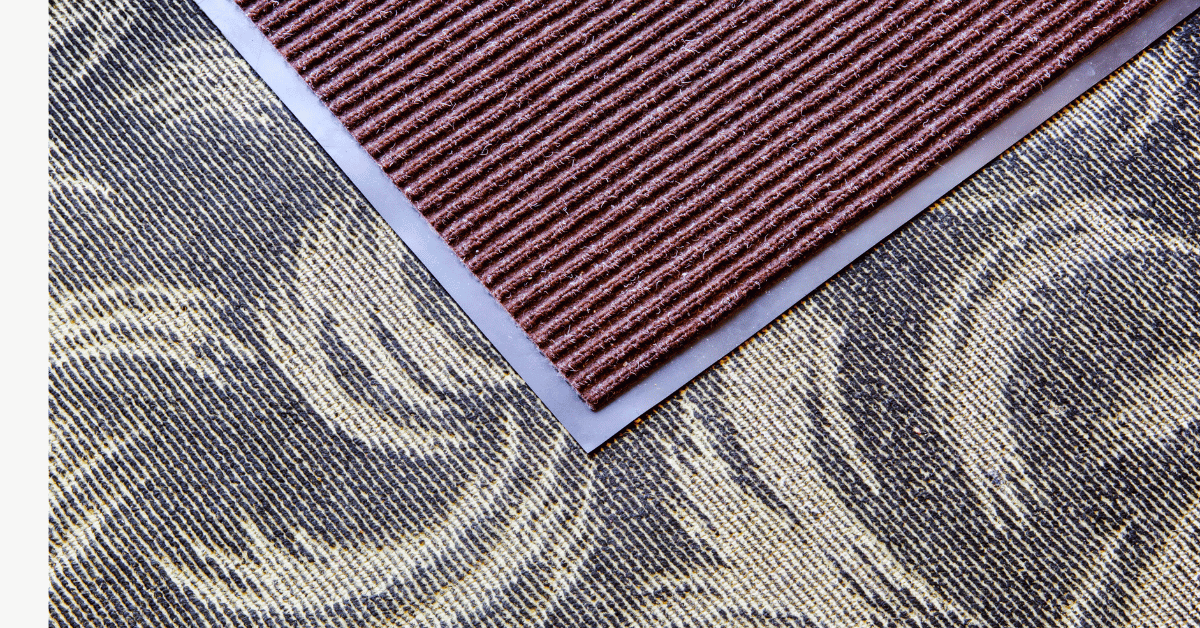Mat Movement: How to Stop Your Mats from Moving on Carpets
We often get customers looking for mats to lay on carpets, whether that’s at a carpeted entranceway, in a corridor, or even placed at a bedside. One of the main concerns of our customers when placing matting on a carpet is mat movement and how to stop it. Mats that slide and shift can become a safety hazard, as well as a nuisance, requiring constant realignment.
Why Does Mat Movement Happen on Carpets?
Mat movement on carpets is a common issue caused by several factors:
-
Lack of Grip – Unlike hard floors, carpets provide a softer and more flexible surface. The fibres in carpets do not offer the same level of friction as harder surfaces, making it easier for mats to move.
-
Carpet Pile Direction – Mats placed on carpets with a deep pile tend to move in the direction of the pile. This is due to the shifting nature of the carpet fibres underneath the mat.
-
Foot Traffic – When people walk across a mat, the downward pressure and movement of feet can gradually shift the mat out of place. This is especially true in high-traffic areas such as entrances and hallways.
-
Mat Weight and Size – Lighter mats are more prone to movement, while larger and heavier mats tend to stay in place due to their increased surface area and weight.
-
Type of Backing – Some mats come with a smooth backing that does not grip well onto carpets, leading to slipping and curling at the edges.
How to Prevent Mat Movement on Carpets
Fortunately, there are several ways to reduce or completely prevent your mat from shifting on a carpet.
1. Choose a Mat with a Non-Slip Rubber Backing
A non-slip rubber backing can significantly help in preventing mat movement on a carpet. While it may not entirely stop movement on thick or plush carpets, it does reduce the amount of shifting and provides better grip underfoot.
2. Opt for a Mat with a Gripper or Claw-Type Backing
Some mats come with a gripper, claw, or cleated backing specifically designed for carpets. Like the Tri Grip Heavy Duty Mats. This backing grips onto the carpet pile, minimising the mat movement. The effectiveness of this method depends on the type of carpet pile—the thicker the pile, the more the mat may still experience slight movement.
How effective a gripper backing is will depend on the length and thickness of the carpet pile. If the carpet is particularly plush, the only answer may to be use an underlay
3. Use a non-skid underlay underneath the mat

3. Use a Non-Skid Underlay Beneath the Mat
If your mat continues to move despite having a non-slip or gripper backing, the next best solution is using a non-skid underlay. This underlay sits between the mat and the carpet, creating an additional layer of grip that reduces movement.
A high-quality underlay, such as Teebaud Non-Skid Underlay, provides excellent stability and can be cut to size for a perfect fit. When cutting the underlay, make sure it is slightly smaller than the mat itself to prevent the edges from lifting, which can create a trip hazard.
4. Increase the Weight of the Mat
Heavier mats are less likely to move because they press down on the carpet more effectively. If your current mat is too lightweight, consider investing in a heavier-duty mat, such as the Tri Grip Heavy Duty Mat, which has a gripper backing designed to prevent movement on carpets.
5. Secure the Mat with Double-Sided Carpet Tape
Another simple yet effective solution is using double-sided carpet tape to anchor the mat in place. Apply the tape to the back of the mat, ensuring that it sticks well to the carpet underneath. This method works best for smaller mats and runners but may not be as effective for larger mats in high-traffic areas.
6. Use Furniture or Decorative Items to Weigh Down the Mat
In some cases, strategically placing furniture, such as a coffee table or bench, on the edges of a mat can help prevent it from moving. This approach is particularly useful for larger mats that do not need to be frequently repositioned.
7. Regularly Adjust and Maintain Your Mat
Even with the best anti-slip measures in place, mats may still shift slightly over time due to everyday use. Periodically adjusting the mat and checking for wear and tear on non-slip backings or underlays will help ensure long-term effectiveness.
Why Stopping Mat Movement is Important
Preventing your mat from shifting on carpet or the floor is not just about convenience; it also has several practical benefits:

-
Safety – A moving mat can cause trips and falls, especially in households with children, elderly individuals, or pets.
-
Aesthetics – A well-placed mat enhances the look of a space. Constantly adjusting a displaced mat can be frustrating and detracts from the room’s appearance.
-
Floor Protection – Mats protect carpets from dirt, spills, and heavy foot traffic. When they move out of place, areas of the carpet become exposed and more susceptible to wear and tear.
-
Prolonging Mat Lifespan – Mats that slide and bunch up can develop creases and wear unevenly, reducing their lifespan.
What Should You Do Next?
If you’re looking for an effective mat that stays in place, consider our Tri Grip Heavy Duty Mat. Designed with a gripper backing, it provides superior stability on carpets, reducing unwanted movement.
For additional security, pairing it with the Teebaud Non-Skid Underlay ensures maximum grip and protection against mat movement. This combination offers a reliable, long-term solution for keeping your mats exactly where you need them.
To purchase these products, visit the Mats4U website. If you need further assistance, feel free to call us on 0121 313 6748 or email sales@mats4u.co.uk. We’re happy to help you find the perfect matting solution for your space!









